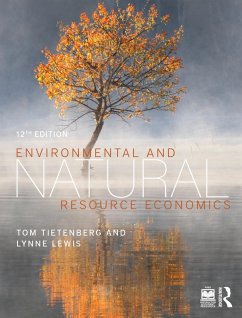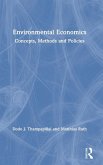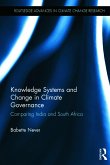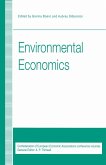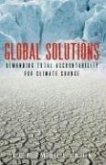- Gebundenes Buch
- Merkliste
- Auf die Merkliste
- Bewerten Bewerten
- Teilen
- Produkt teilen
- Produkterinnerung
- Produkterinnerung
This 12th edition provides updated data, new studies and more international examples. There is a considerable amount of new material, with a deeper focus on climate change and coverage of COVID-19, social justice and the circular economy.
Andere Kunden interessierten sich auch für
![Environmental Economics Environmental Economics]() Dodo J ThampapillaiEnvironmental Economics176,99 €
Dodo J ThampapillaiEnvironmental Economics176,99 €![A European Just Transition for a Better World A European Just Transition for a Better World]() Dirk HolemansA European Just Transition for a Better World28,99 €
Dirk HolemansA European Just Transition for a Better World28,99 €![An Economy of Well-Being An Economy of Well-Being]() Mark AnielskiAn Economy of Well-Being15,99 €
Mark AnielskiAn Economy of Well-Being15,99 €![Strategies for Rapid Climate Mitigation Strategies for Rapid Climate Mitigation]() Laurence DelinaStrategies for Rapid Climate Mitigation187,99 €
Laurence DelinaStrategies for Rapid Climate Mitigation187,99 €![Knowledge Systems and Change in Climate Governance Knowledge Systems and Change in Climate Governance]() Babette NeverKnowledge Systems and Change in Climate Governance187,99 €
Babette NeverKnowledge Systems and Change in Climate Governance187,99 €![Environmental Economics Environmental Economics]() Environmental Economics113,99 €
Environmental Economics113,99 €![Global Solutions: Demanding Total Accountability For Climate Change Global Solutions: Demanding Total Accountability For Climate Change]() Tom S. MullikinGlobal Solutions: Demanding Total Accountability For Climate Change17,99 €
Tom S. MullikinGlobal Solutions: Demanding Total Accountability For Climate Change17,99 €-
-
-
This 12th edition provides updated data, new studies and more international examples. There is a considerable amount of new material, with a deeper focus on climate change and coverage of COVID-19, social justice and the circular economy.
Produktdetails
- Produktdetails
- Verlag: Taylor & Francis Ltd (Sales)
- 12th edition
- Seitenzahl: 612
- Erscheinungstermin: 31. Juli 2023
- Englisch
- Abmessung: 259mm x 180mm x 35mm
- Gewicht: 1448g
- ISBN-13: 9781032101187
- ISBN-10: 1032101180
- Artikelnr.: 68510443
- Herstellerkennzeichnung
- Libri GmbH
- Europaallee 1
- 36244 Bad Hersfeld
- gpsr@libri.de
- Verlag: Taylor & Francis Ltd (Sales)
- 12th edition
- Seitenzahl: 612
- Erscheinungstermin: 31. Juli 2023
- Englisch
- Abmessung: 259mm x 180mm x 35mm
- Gewicht: 1448g
- ISBN-13: 9781032101187
- ISBN-10: 1032101180
- Artikelnr.: 68510443
- Herstellerkennzeichnung
- Libri GmbH
- Europaallee 1
- 36244 Bad Hersfeld
- gpsr@libri.de
Tom Tietenberg is the Mitchell Family Professor of Economics, Emeritus at Colby College, Maine, USA. Lynne Lewis is Elmer W. Campbell Professor of Economics at Bates College, Maine, USA.
Part I: Introduction to the Field of Environmental and Natural Resource
Economics 1. Visions of the Future 2. The Economic Approach: Property
Rights, Externalities, and Environmental Problems 3. Evaluating Trade-Offs:
Benefit-Cost Analysis and Other Decision-Making Metrics 4. Valuing the
Environment: Methods 5. Dynamic Efficiency and Sustainable Development 6.
Depletable Resource Allocation: The Role of Longer Time Horizons,
Substitutes and Extraction Cost Part II: Economics of Pollution Control 7.
Economics of Pollution Control: An Overview 8. Stationary-Source Local and
Regional Air Pollution 9. Water Pollution: Managing water quality for
rivers, lakes, and oceans 10. Toxic Substances and Environmental Justice
Part III: Climate Section 11. Climate Change I: The Nature of the Challenge
12. Climate Change II: The Role of Energy Policy 13. Climate Change III:
Carbon Pricing 14. Climate Change IV: Adaptation - Floods, fires and water
scarcity 15. Transportation: Managing congestion and pollution Part IV:
Natural Resource Economics 16. Ecosystem Services: Nature's Threatened
Bounty 17. Common-Pool Resources: Commercially Valuable Fisheries 18.
Forests: Storable, Renewable Resources 19. Land: A Locationally Fixed,
Multipurpose Resource Part V: Sustainable Development 20. Sustainable
Development: Meeting the Challenge End Matter: Answers to Self-Test
Exercises Glossary Index
Economics 1. Visions of the Future 2. The Economic Approach: Property
Rights, Externalities, and Environmental Problems 3. Evaluating Trade-Offs:
Benefit-Cost Analysis and Other Decision-Making Metrics 4. Valuing the
Environment: Methods 5. Dynamic Efficiency and Sustainable Development 6.
Depletable Resource Allocation: The Role of Longer Time Horizons,
Substitutes and Extraction Cost Part II: Economics of Pollution Control 7.
Economics of Pollution Control: An Overview 8. Stationary-Source Local and
Regional Air Pollution 9. Water Pollution: Managing water quality for
rivers, lakes, and oceans 10. Toxic Substances and Environmental Justice
Part III: Climate Section 11. Climate Change I: The Nature of the Challenge
12. Climate Change II: The Role of Energy Policy 13. Climate Change III:
Carbon Pricing 14. Climate Change IV: Adaptation - Floods, fires and water
scarcity 15. Transportation: Managing congestion and pollution Part IV:
Natural Resource Economics 16. Ecosystem Services: Nature's Threatened
Bounty 17. Common-Pool Resources: Commercially Valuable Fisheries 18.
Forests: Storable, Renewable Resources 19. Land: A Locationally Fixed,
Multipurpose Resource Part V: Sustainable Development 20. Sustainable
Development: Meeting the Challenge End Matter: Answers to Self-Test
Exercises Glossary Index
Part I: Introduction to the Field of Environmental and Natural Resource
Economics 1. Visions of the Future 2. The Economic Approach: Property
Rights, Externalities, and Environmental Problems 3. Evaluating Trade-Offs:
Benefit-Cost Analysis and Other Decision-Making Metrics 4. Valuing the
Environment: Methods 5. Dynamic Efficiency and Sustainable Development 6.
Depletable Resource Allocation: The Role of Longer Time Horizons,
Substitutes and Extraction Cost Part II: Economics of Pollution Control 7.
Economics of Pollution Control: An Overview 8. Stationary-Source Local and
Regional Air Pollution 9. Water Pollution: Managing water quality for
rivers, lakes, and oceans 10. Toxic Substances and Environmental Justice
Part III: Climate Section 11. Climate Change I: The Nature of the Challenge
12. Climate Change II: The Role of Energy Policy 13. Climate Change III:
Carbon Pricing 14. Climate Change IV: Adaptation - Floods, fires and water
scarcity 15. Transportation: Managing congestion and pollution Part IV:
Natural Resource Economics 16. Ecosystem Services: Nature's Threatened
Bounty 17. Common-Pool Resources: Commercially Valuable Fisheries 18.
Forests: Storable, Renewable Resources 19. Land: A Locationally Fixed,
Multipurpose Resource Part V: Sustainable Development 20. Sustainable
Development: Meeting the Challenge End Matter: Answers to Self-Test
Exercises Glossary Index
Economics 1. Visions of the Future 2. The Economic Approach: Property
Rights, Externalities, and Environmental Problems 3. Evaluating Trade-Offs:
Benefit-Cost Analysis and Other Decision-Making Metrics 4. Valuing the
Environment: Methods 5. Dynamic Efficiency and Sustainable Development 6.
Depletable Resource Allocation: The Role of Longer Time Horizons,
Substitutes and Extraction Cost Part II: Economics of Pollution Control 7.
Economics of Pollution Control: An Overview 8. Stationary-Source Local and
Regional Air Pollution 9. Water Pollution: Managing water quality for
rivers, lakes, and oceans 10. Toxic Substances and Environmental Justice
Part III: Climate Section 11. Climate Change I: The Nature of the Challenge
12. Climate Change II: The Role of Energy Policy 13. Climate Change III:
Carbon Pricing 14. Climate Change IV: Adaptation - Floods, fires and water
scarcity 15. Transportation: Managing congestion and pollution Part IV:
Natural Resource Economics 16. Ecosystem Services: Nature's Threatened
Bounty 17. Common-Pool Resources: Commercially Valuable Fisheries 18.
Forests: Storable, Renewable Resources 19. Land: A Locationally Fixed,
Multipurpose Resource Part V: Sustainable Development 20. Sustainable
Development: Meeting the Challenge End Matter: Answers to Self-Test
Exercises Glossary Index

